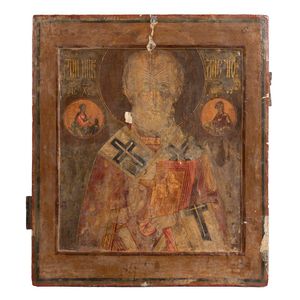Robert Prenzel Koala Relief Panel, 1925
You must be a subscriber, and be logged in to view price and dealer details.
Subscribe Now to view actual auction price for this item
When you subscribe, you have the option of setting the currency in which to display prices to $Au, $US, $NZ or Stg.
- Victorian Period - The Victorian period of furniture and decorative arts design covers the reign of Queen Victoria from 1837 to 1901. There was not one dominant style of furniture in the Victorian period. Designers used and modified many historical styles such as Gothic, Tudor, Elizabethan, English Rococo, Neoclassical and others, although use of some styles, such as English Rococo and Gothic tended to dominate the furniture manufacture of the period.
The Victorian period was preceded by the Regency and William IV periods, and followed by the Edwardian period, named for Edward VII (1841 ? 1910) who was King of the United Kingdom and the British Dominions and Emperor of India for the brief period from 1901 until his death in 1910. - Federation Period - The Federation style in architecture and furniture is broadly the Australian equivalent of the English Edwardian period and extended from 1890 to 1915. The name relates to Australia becoming a Federation in 1901, when the colonies became the Commonwealth of Australia.
- Art Nouveau Period - The Art Nouveau period was a cultural movement that emerged in the late 19th century, and was characterized by its emphasis on natural forms, flowing lines, and a decorative, ornamental style. Art Nouveau was a reaction against the ornate and heavily stylized designs of the previous era, and sought to create a new, more organic aesthetic.
Art Nouveau was characterized by its use of sinuous, curving lines, as well as a focus on natural elements such as flowers, vines, and other organic shapes. Art Nouveau designers sought to create a total work of art, in which every element of a building or object was designed to be harmonious with the overall design.
Some of the most iconic examples of Art Nouveau design include the Paris Metro entrances designed by Hector Guimard, the works of the artist Alphonse Mucha, and the architecture of Victor Horta in Brussels.
The Art Nouveau period was at its peak between 1890 and 1910, but began to decline in popularity by the start of World War I. However, Art Nouveau remains an important influence on design and art to this day, and continues to be celebrated for its emphasis on natural forms and decorative style.
This item has been included into following indexes:
Visually similar items

A pine relief carved diorama of a clipper ship in full sail, Australian, late 19th/20th century, 37 cm high, 51 cm wide

19th century Berlin woolwork picture. Young girl carrying firewood. Original solid walnut frame. 50 x 42 cm

A Russian Orthodox icon, 19th century, depicting Saint Nicholas the wonder worker of Myra, 31.5 cm x 37.5 cm

An early 1900s N.Z. folk art carved cupboard, the small kauri cupboard with the door heavily carved in an Australian theme featuring a kangaroo, kookaburra, an aboriginal figure, lizard, emu etc. and a shield quoting ?The Black Forest Australia?. Three she
